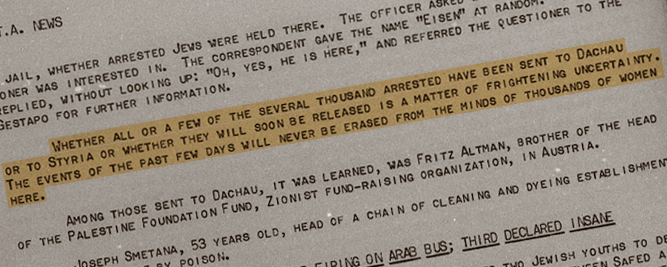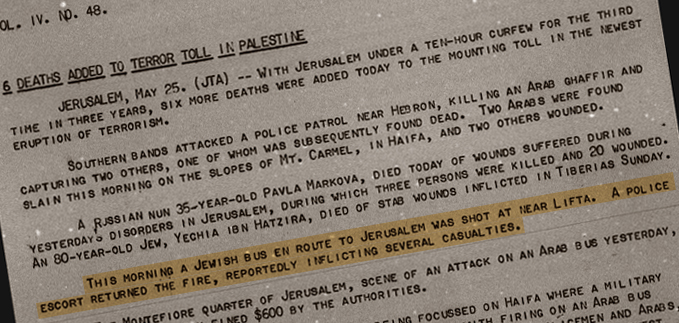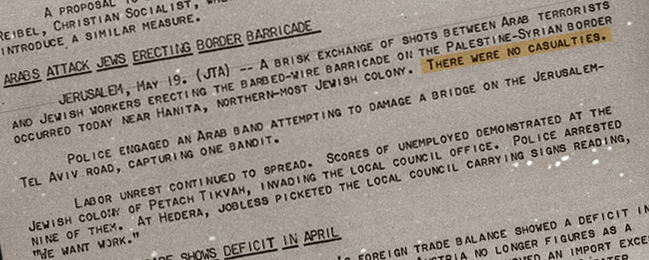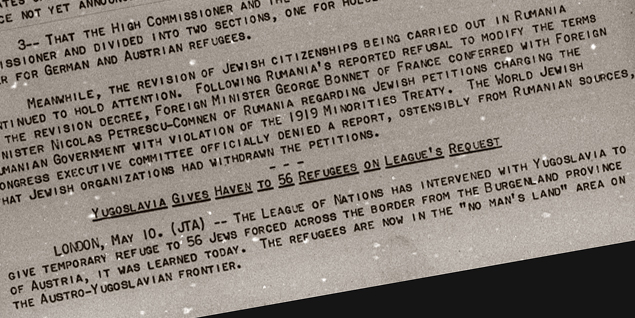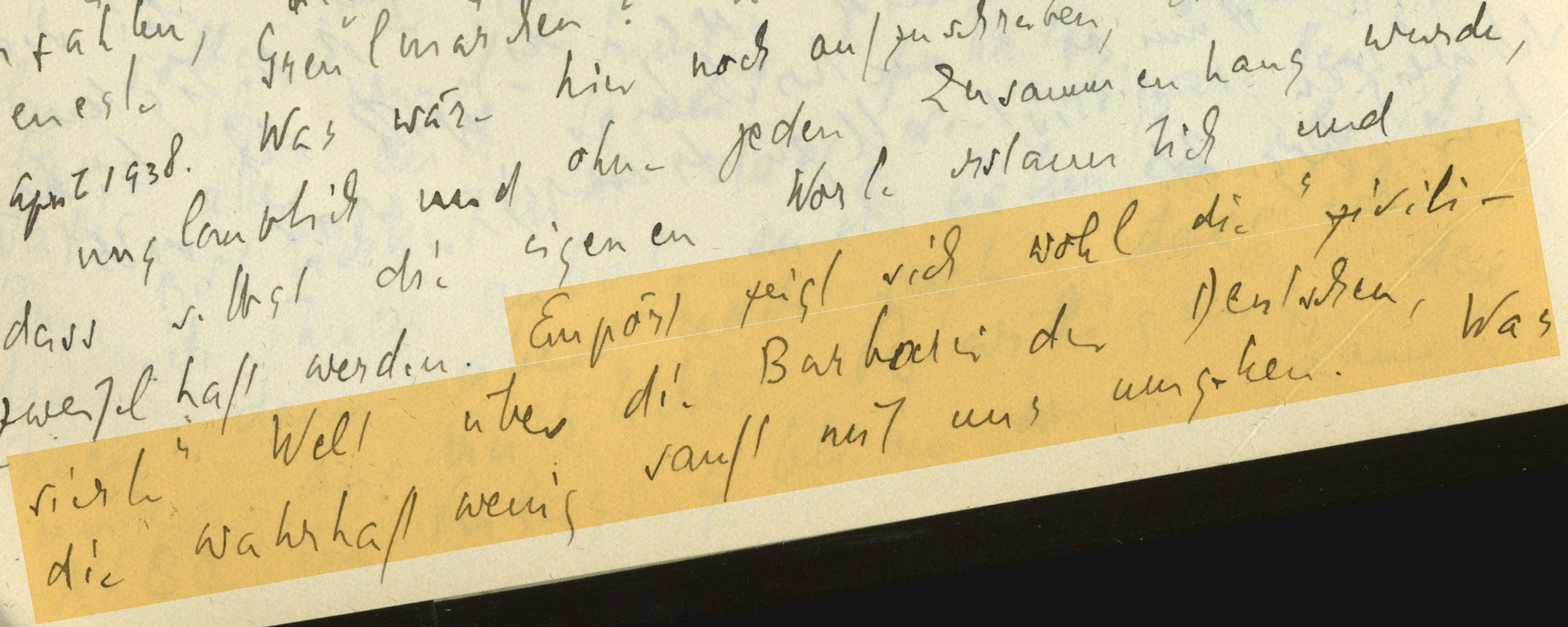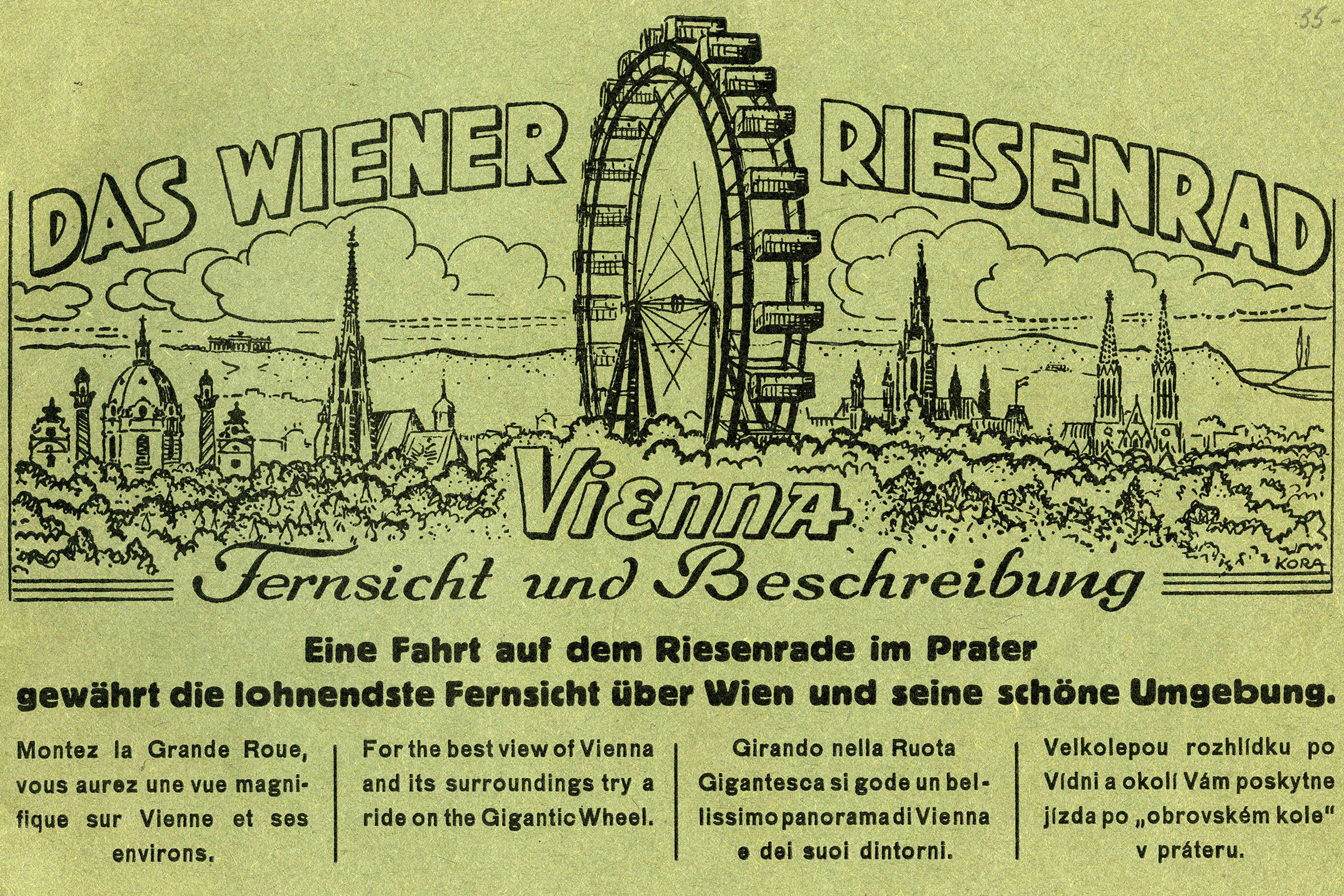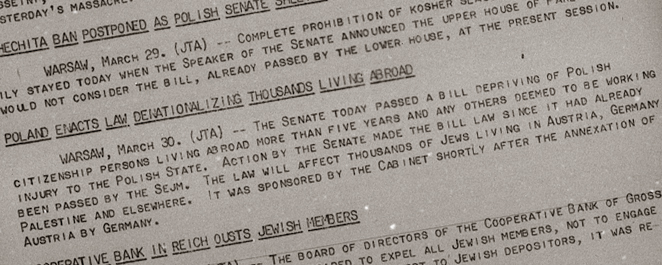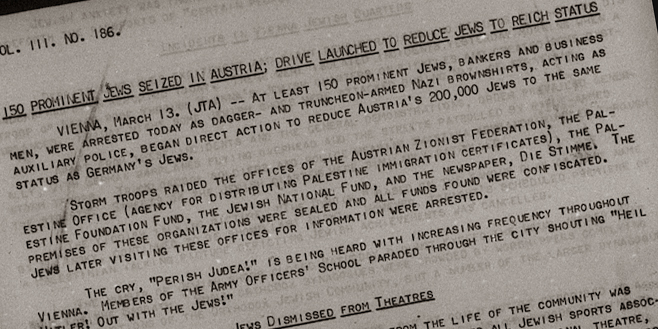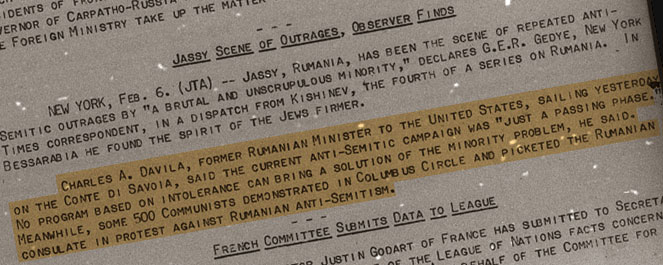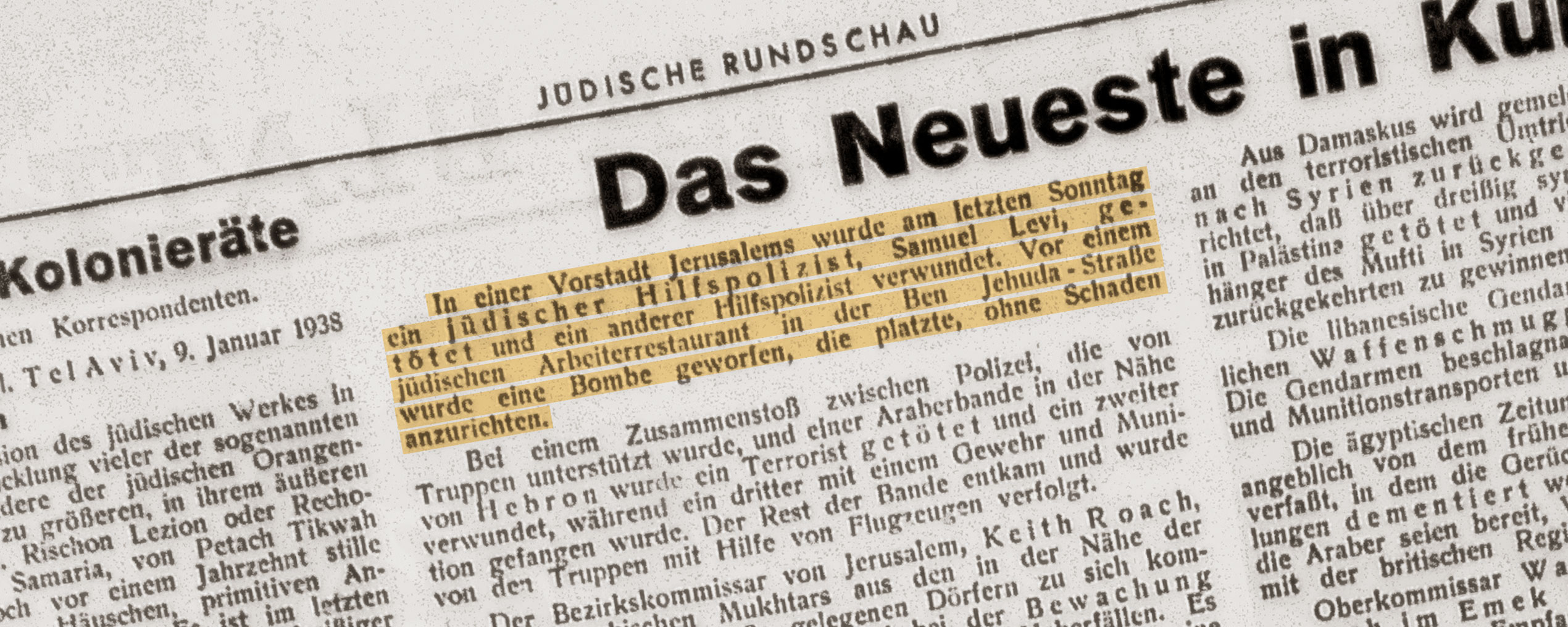Unbearable despair
Jewish Telegraphic Agency publishes list of recent suicides
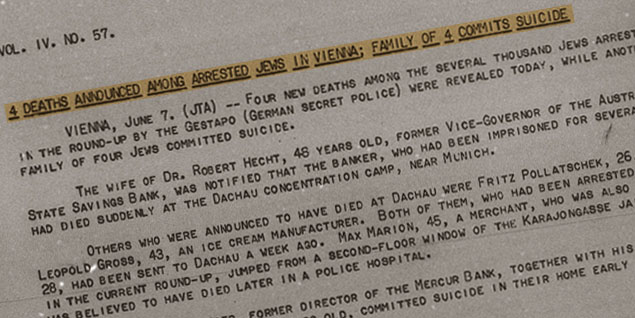
“4 Deaths Announced Among Arrested Jews in Vienna; Family of 4 Committs suicide”
Vienna
The Anschluss, Austria’s annexation by Nazi Germany in March 1938, precipitated a wave of anti-Jewish violence. Emboldened by their new status and by the utter defenselessness of the Jewish population, Nazis and their sympathizers entered Jewish homes and seized whatever property they liked. Jewish-run businesses were ransacked or destroyed, and Jews of all ages were forced to carry out the demeaning task of scrubbing streets to remove political slogans under the eyes of jeering onlookers. With no protection to be expected from police, a feeling of utter abandonment and hopelessness drove many Jews to take their own lives. In the first two months after the Anschluss, 218 Jews escaped the state-sanctioned cruelty by taking their own lives. The JTA’s June 7 dispatch lists the most recent suicides—including that of a family of four—and deaths at the Dachau concentration camp.
SOURCE
Institution:
Collection:
“4 Deaths Announced Among Arrested Jews in Vienna; Family of 4 Commits Suicide” 
Source available in English








































